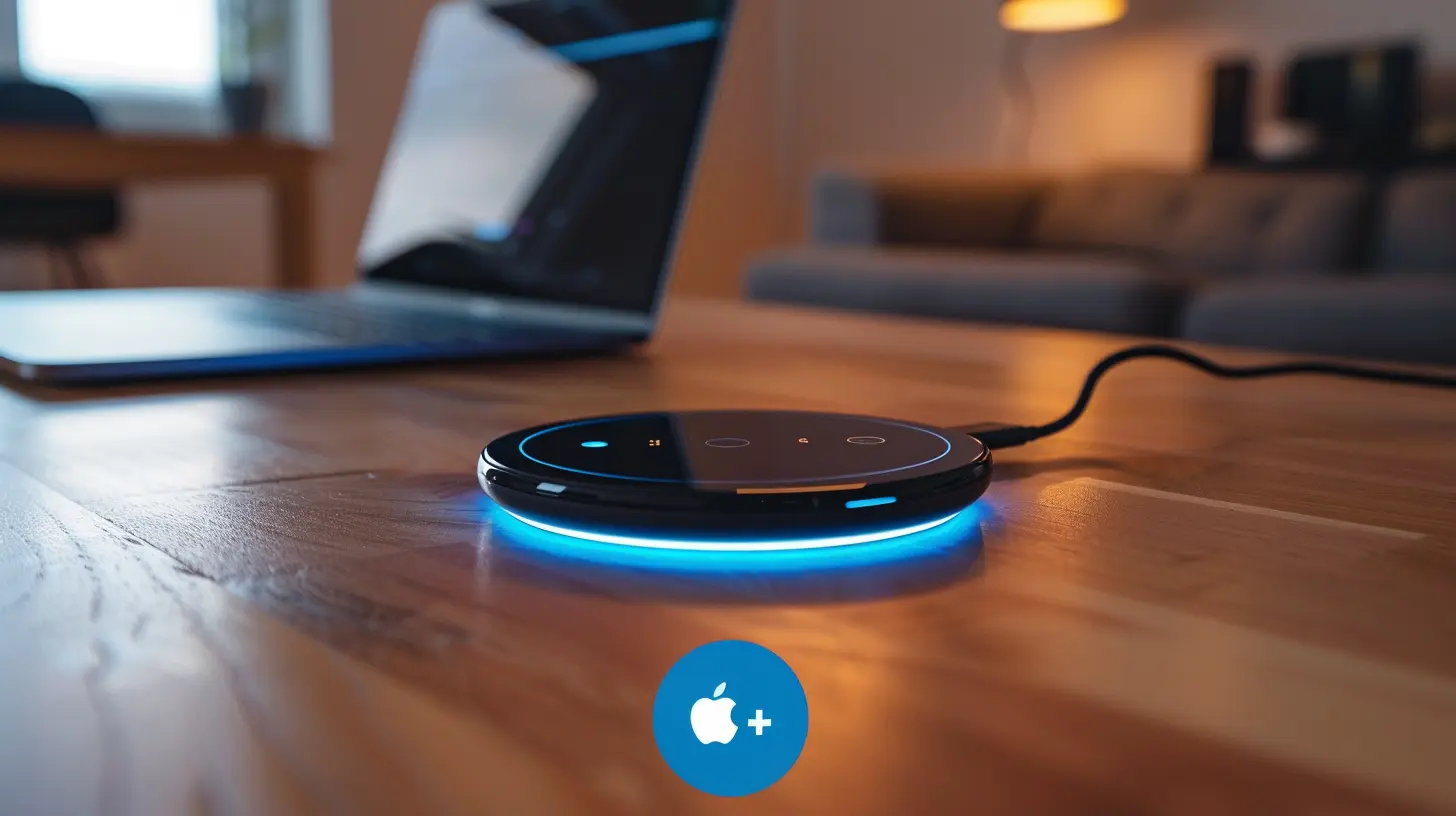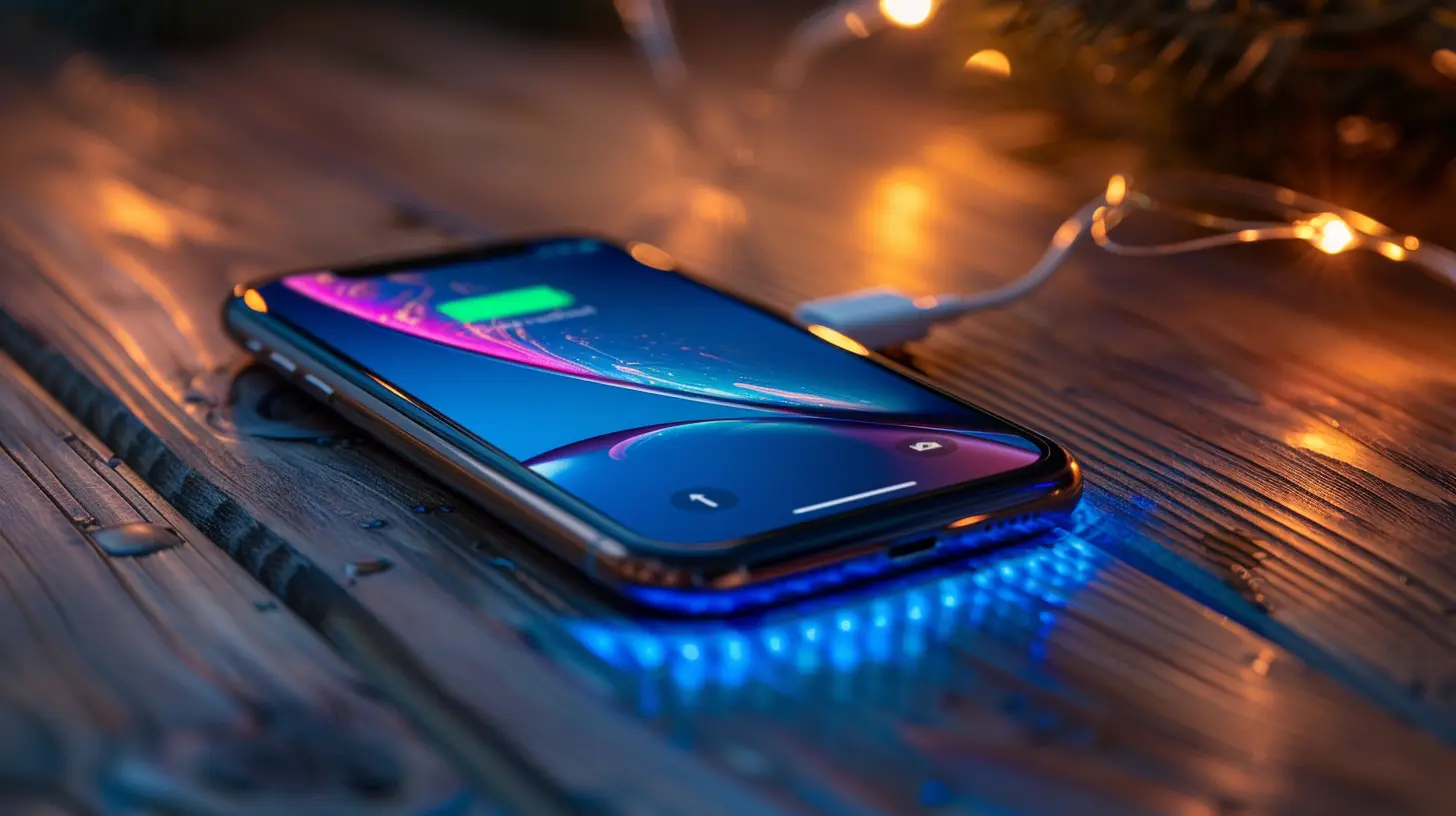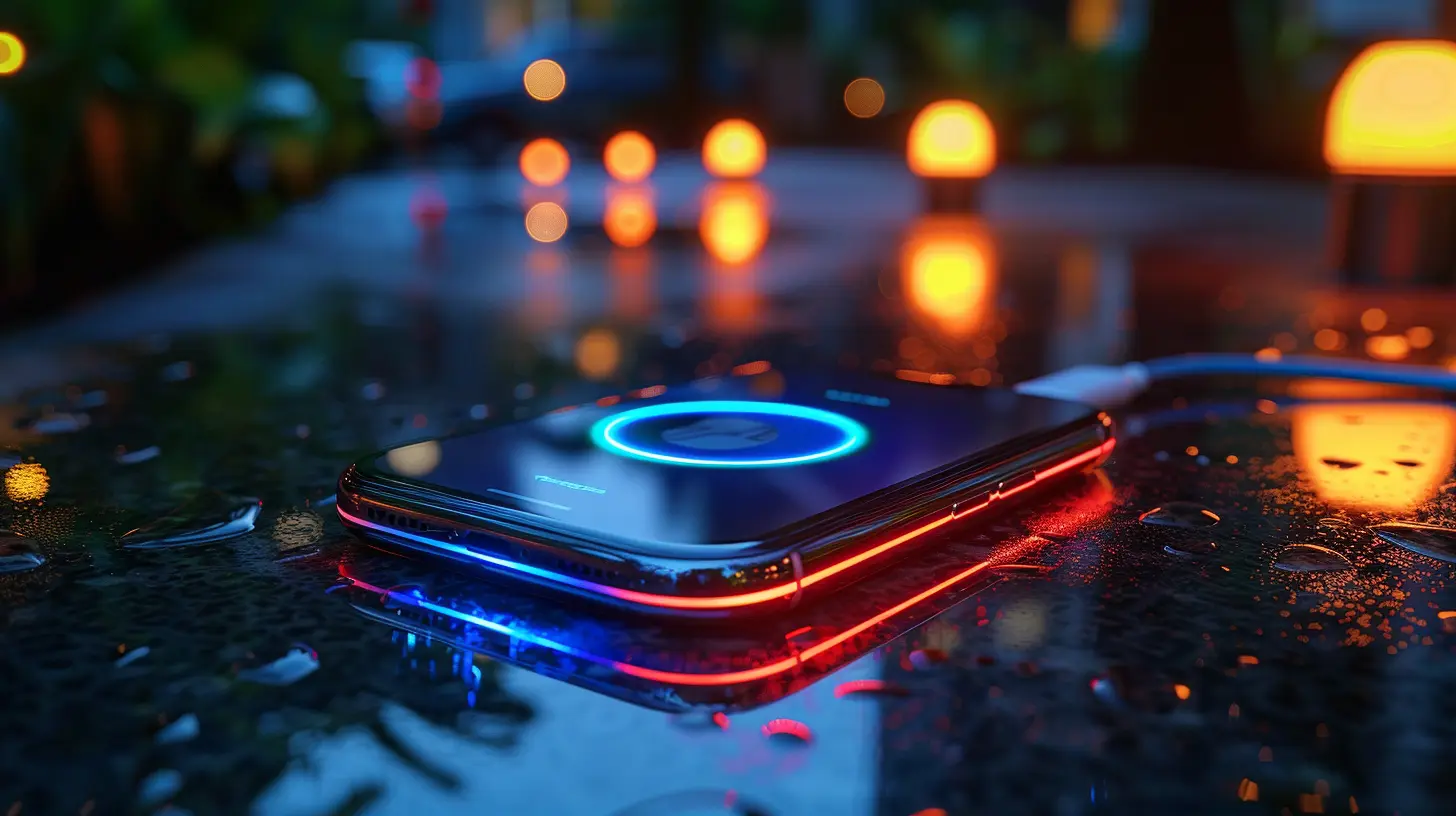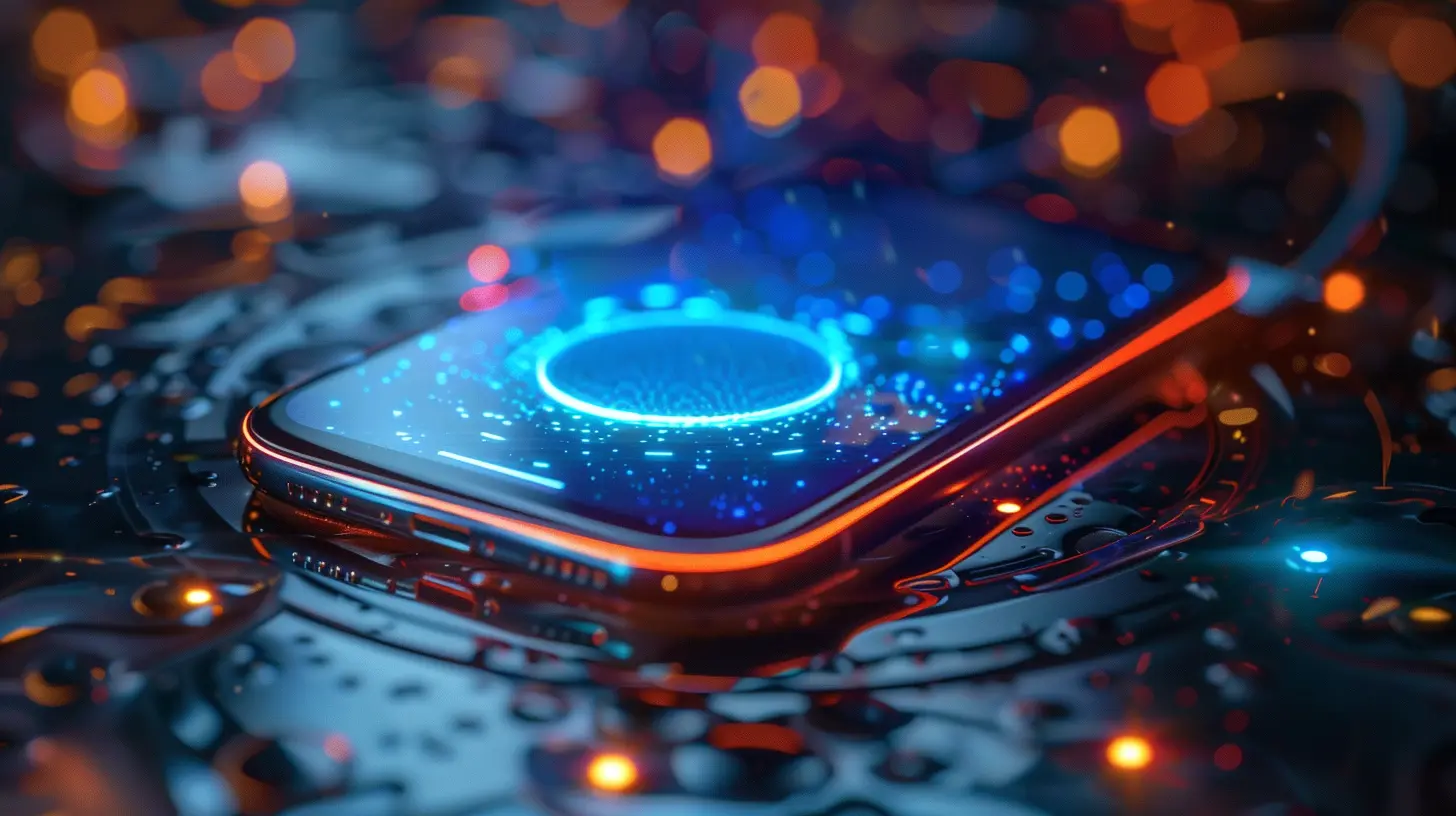How Wireless Charging Works: A Deep Dive
20 June 2025
Wireless charging—it's one of those futuristic technologies that feel like magic, right? You place your phone on a pad, and boom! It starts charging without plugging in a single cable. But have you ever wondered how this actually works? Is it really efficient? And why do some phones charge faster than others?
Let's take a deep dive into the world of wireless charging and uncover the science behind it.

What Is Wireless Charging?
Wireless charging, also known as inductive charging, is a method of transferring power without a physical connection. Instead of using a standard charging cable, power is sent from a charging pad (or dock) to your device using an electromagnetic field.This technology isn’t new—you might be surprised to know that Nikola Tesla was experimenting with wireless power transmission back in the late 19th century! But only recently has it become common in consumer devices like smartphones, wireless earbuds, and even electric cars.

The Science Behind Wireless Charging
To understand how wireless charging works, we need to talk about three key components:- The Charging Pad (Transmitter): This is the base station that generates the electromagnetic field.
- The Device (Receiver): Your smartphone or another gadget has a coil inside that picks up the energy.
- Electromagnetic Induction: The magic behind it all!
Electromagnetic Induction: The Heart of Wireless Charging
Wireless charging relies on electromagnetic induction—the same principle behind transformers and electric motors. Here’s how it works:1. Electricity flows into the charging pad, creating an alternating current (AC).
2. The AC generates a magnetic field using a coil inside the pad.
3. Your phone contains a similar coil, which picks up this magnetic field.
4. The phone's coil converts the energy back into electricity to charge the battery.
Pretty cool, right? But that’s just the basic idea. In reality, there’s a lot more going on behind the scenes to ensure efficient power transfer.

Types of Wireless Charging
Not all wireless charging technologies are created equal. Let’s break down the different types.1. Inductive Charging (Qi Standard)
This is the most common form of wireless charging, used in smartphones, smartwatches, and earbuds. The Qi (pronounced 'chee') standard, developed by the Wireless Power Consortium (WPC), is the industry norm.How Inductive Charging Works:
- The charging pad and device must be very close (typically within a few millimeters).- Both the pad and the phone need to be properly aligned for optimal charging.
- It’s not the fastest method of charging, but it’s widely supported.
2. Resonant Wireless Charging
Resonant charging is more flexible than standard inductive charging. Devices don’t have to be perfectly aligned, and they can even charge at a short distance from the pad.How Resonant Charging Works:
- A charging coil and receiver coil tune to the same resonant frequency, allowing energy transfer even if the device isn't perfectly positioned.- Can be used for charging multiple devices at once on the same pad.
- Typically less efficient than inductive charging, due to energy loss.
3. Radio Frequency (RF) & Over-the-Air Charging
Imagine charging your phone without even putting it on a pad! That’s what RF and over-the-air wireless charging aim to achieve.These systems transmit power using radio waves, which are then converted into electricity by a receiver in the device. While still in the early stages, companies like Energous and Ossia are developing over-the-air charging solutions that work over distances.
4. Magnetic Resonance Charging (Used in Electric Vehicles)
For larger applications, like electric vehicle (EV) charging, inductive charging isn’t always practical. Instead, magnetic resonance charging is often used. This allows charging at greater distances and higher power levels.
Advantages of Wireless Charging
So, why bother with wireless charging when traditional cables work just fine? Here are some of the biggest benefits:1. Convenience
No more fumbling with cables! Just drop your phone on the pad and go.2. Reduced Wear and Tear
Traditional charging ports wear out over time. Since wireless charging eliminates the need for frequent plugging and unplugging, it extends the lifespan of your device’s charging port.3. Safer Connections
Since there’s no exposed metal contacts, there’s a lower risk of short circuits or corrosion.4. Universal Compatibility (To Some Extent)
Thanks to the Qi standard, many devices now support wireless charging, making it easier to use a single charger for multiple gadgets.Disadvantages of Wireless Charging
Like any technology, wireless charging has its drawbacks.1. Slower Charging Speeds
Most wireless chargers are slower than fast-charging cables. While some support "fast" wireless charging, it’s still not as quick as a wired connection.2. Energy Loss & Inefficiency
Wireless charging isn’t 100% efficient—some energy is lost as heat. This means it consumes more power compared to wired charging.3. Device Placement Issues
If your phone isn’t aligned properly on the charging pad, it might not charge efficiently, or worse, not charge at all.4. Limited Mobility
When charging with a cable, you can still use your phone while it’s charging. With wireless charging, you must leave it on the pad, limiting usability.
Myths & Misconceptions About Wireless Charging
Myth #1: Wireless Charging Ruins Your Battery
Not really! Wireless charging doesn't inherently damage your battery unless excessive heat is involved. Modern devices manage temperature to prevent overheating.Myth #2: Wireless Charging Wastes Too Much Energy
While wireless charging has some energy loss, it’s improving. The latest generation of Qi chargers has energy efficiency close to wired charging.Myth #3: All Phones Support Wireless Charging
Nope! Not every phone has the necessary coil inside. If your device isn’t built for wireless charging, you’ll need a custom case or adapter.The Future of Wireless Charging
Where’s wireless charging heading in the future? Expect even faster speeds, greater charging distances, and better efficiency. There’s even talk of charging entire rooms wirelessly using advanced resonant technology!Potential innovations include:
- Long-range wireless charging (true over-the-air charging).
- Integration into more public spaces, like cafes, airports, and cars.
- Improved efficiency and reduced heat generation.
Should You Use Wireless Charging?
So, should you ditch your cables and go fully wireless? It depends! If you love convenience and don’t mind slightly slower speeds, wireless charging is fantastic. However, if you need fast charging or use your phone frequently while charging, a wired connection still has the edge.One thing is certain—wireless charging is only going to get better. Whether it’s in smartphones, accessories, or even electric cars, this technology will continue to evolve.
What about you? Do you use wireless charging regularly, or are you sticking with good old-fashioned cables?
all images in this post were generated using AI tools
Category:
Wireless ChargingAuthor:

Vincent Hubbard
Discussion
rate this article
2 comments
Gideon Hughes
Thank you for this insightful article! Wireless charging has truly transformed our tech experience, making convenience and efficiency more accessible for everyone. Keep up the great work!
November 6, 2025 at 11:54 AM

Vincent Hubbard
Thank you for your kind words! I'm glad you found the article insightful. Wireless charging really is a game changer!
Nellie McKale
Embrace the future of technology! Understanding wireless charging not only sparks curiosity but also empowers you to innovate and explore limitless possibilities. Keep learning!
July 1, 2025 at 4:19 AM

Vincent Hubbard
Thank you for your insightful comment! Embracing wireless charging indeed opens up exciting avenues for innovation. Let's keep exploring together!


